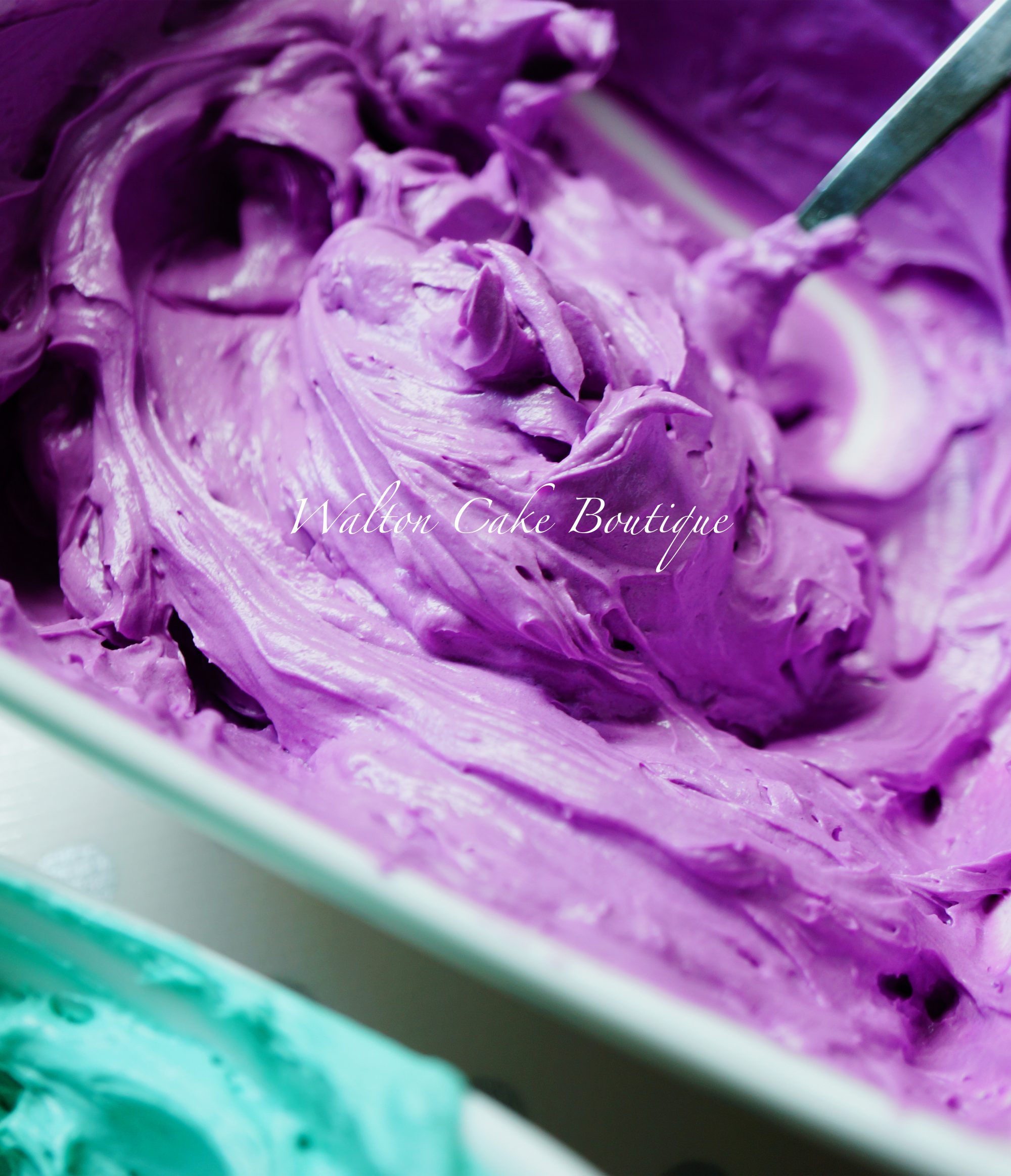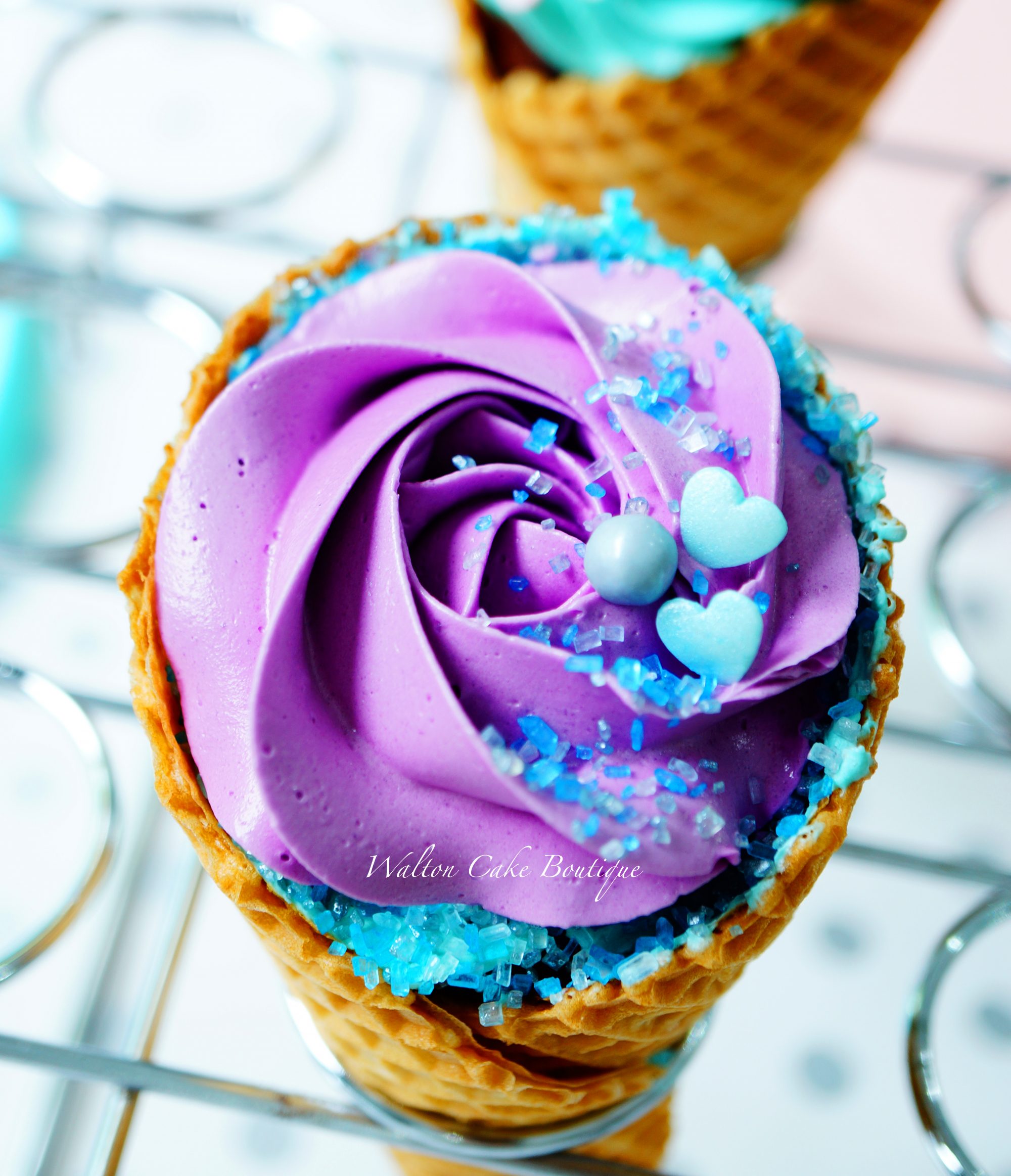by Katherine Walton on May 2, 2022 4 Comments


This Vegan Buttercream is a great alternative for those wanting a frosting similar to American buttercream without using real butter. It uses only three ingredients, it is quick and easy to make and tastes delicious with a texture similar to a mousse. It is very delicate and silky. Stable enough to pipe rosettes or even flowers for cupcakes and cakes alike.
In this Vegan Buttercream Recipe I use Nuttelex, an Australian Vegan Spread. It is dairy free, gluten free, nut oil free and soy free. It is soft in texture and consistency, two qualities to be aware of as they can affect the stability and overall structure of the frosting. If you live in a warm environment I recommend that you use a 1:2 ratio of Vegan spread to icing sugar (powdered/confectioner’s sugar). You will find more information about how to adjust this recipe for warm weather and how to fix any troubleshooting at the end of this page. Continue to read on and watch my full Step by Step Vegan Buttercream Recipe video tutorial below and read along with the full written recipe below.
Preheat oven to 150 degrees Celsius fan forced (300 Fahrenheit; Gas Mark 2).
Prepare and line two 6 inch baking pans. You can use the butter and flour method as shown in my video tutorial above or you can also line the pans with butter and parchment paper as I show in previous tutorials. If using the butter and flour method, make sure you spread the butter evenly inside the pans, then sprinkle some flour to cover the whole pan as the flour adheres to the butter. Shake off excess flour by tapping on the pan. In a large bowl, place the dry ingredients. Add the sugar, flour, dutch cocoa powder^, baking soda and baking powder. Combine all ingredients very well with a large spoon or spatula. Scrape the bowl as needed.
Add the wet ingredients (oil, softened butter, whisked eggs, buttermilk and vanilla extract) into the dry ingredients. Combine well until all ingredients are incorporated. Scrape the bowl as needed. The final batter mixture should be creamy and smooth. Add equal amounts of batter into the two 6 inch baking pans. Each pan will have approximately 500 grams of batter.
Even out the batter in the pans with a spoon and place in the oven to bake for 30-40 minutes at 150 degrees Celsius.
Check if the cakes have baked through by inserting a toothpick or skewer into the cake. The toothpick should come out clean and free of wet batter. Do not over bake the cake.
Remove the pans from the oven and leave to cool for 10 minutes.
Remove the cakes from pans. They should slice out easily by turning the pan upside down.
Place the cakes on a cooling rack and leave to cool completely before levelling, assembling and frosting.
You can also wrap the cakes in cling film and store in the fridge to use at a later.
The cakes can stay at room temperature for three days and five days in the fridge.
How are the ingredients measured in this recipe?
In this recipe and in all of my recipes I provide all ingredients in grams and in mL (millilitres) where applicable. I also provide the ingredient quantities in METRIC cup measurements. However, be aware that cup measurements and spoon measurements vary in different countries. Therefore, I highly recommended the use of kitchen scales where applicable to measure the ingredients to achieve exactly what the recipe intends.
What is icing sugar and can I substitute it in this recipe?
Icing sugar is also known as powdered sugar and confectioners’ sugar. Not to be confused or replaced with caster sugar also known as super fine granulated sugar. The icing sugar in this recipe cannot be substituted.
What does cold Vegan spread mean?
Vegan spreads tend to be a lot softer in consistency than regular butter. Therefore, it is very important that in this recipe they are used immediately after taken out of the fridge and not let the spread soften or melt. Letting the spread melt at room temperature can affect the stability of the frosting, making it difficult to come together.
We don’t have Nuttelex in my country, what can use instead?
Nuttelex is a blend of plant based oils, it is dairy free, gluten free, soy free and nut free. You can use an alternative vegan spread or vegan butter as a substitute. In the U.S. Earth Balance can be used as a substitute.
How to store this Vegan Buttercream and what is its shelf life?
Store this frosting sealed in an airtight container. You may store in the fridge for up to 5 days or at room temperature for up to 3 days. If stored in the fridge bring to room temperature before using again. The Vegan buttercream will thicken up. You may re whip in a mixer or with a metal spoon.
Can I colour this Vegan Buttercream?
Yes, you certainly can. I would recommend dividing the frosting into separate bowls and then colouring each in your chosen colours. It is also best to use a gel or oil based food colouring. Liquid food colouring will change and affect the consistency making it runny.
Troubleshooting
The vegan buttercream is too soft to work with. What can I do to fix it?
In some cases you may find that the vegan buttercream is too soft to work with. In most circumstances this will be due to the temperature of the room the vegan buttercream is being used in. In warm weather, you may find that this vegan buttercream will be too soft or runny. You can fix this problem by either changing and adjusting the recipe or you can also refrigerate the frosting and if possible work in a cold or air conditioned room.
Comments are closed.
Hello, I am so happy to see a vegan recipe! I’ve been making my own since cutting out dairy and it doesn’t get super smooth. Would it be possible to make this with chocolate?
Hi Haylee 😊, I’ll be introducing more vegan and dairy free type recipes. Yes, you can certainly mix it with chocolate. I would use cocoa powder by adding 1/4 cup then mix. Then add another 1/4 if you feel it needs it more for taste.
Hi Katherine, thanks for the recipe! I look forward to trying it out this week. In the past when I’ve used nuttelex to make buttercream the result has turned out quite grainy – do you have any suggestions on how to avoid this? I suspect I may not have beaten the nuttelex for long enough prior to adding the icing sugar.
I plan on using the buttercream between cake layers – do you think using the 1:2 ratio will give enough stability?
Thanks 🙂
Megan
Hi Megan 😊, you’re very welcome. I suspect it could have been the ratio of Nuttelex to icing sugar. The more icing sugar the more grainy it can be. The recipe I have has a 1:1 ratio so the icing sugar isn’t so noticeable. In saying that it does make it less stable in warm weather, so it’s better in winter. A ratio of 1:2 of Nuttelex to icing sugar will definitely give it more stability. If you find it too grainy with a 1:2 ratio you can either try making sure the frosting it mixed for extra time at the end and also cutting back the icing sugar ratio by 1:1.5 which will still give it stability but a less grainy texture. Let me know how you go. Katherine.